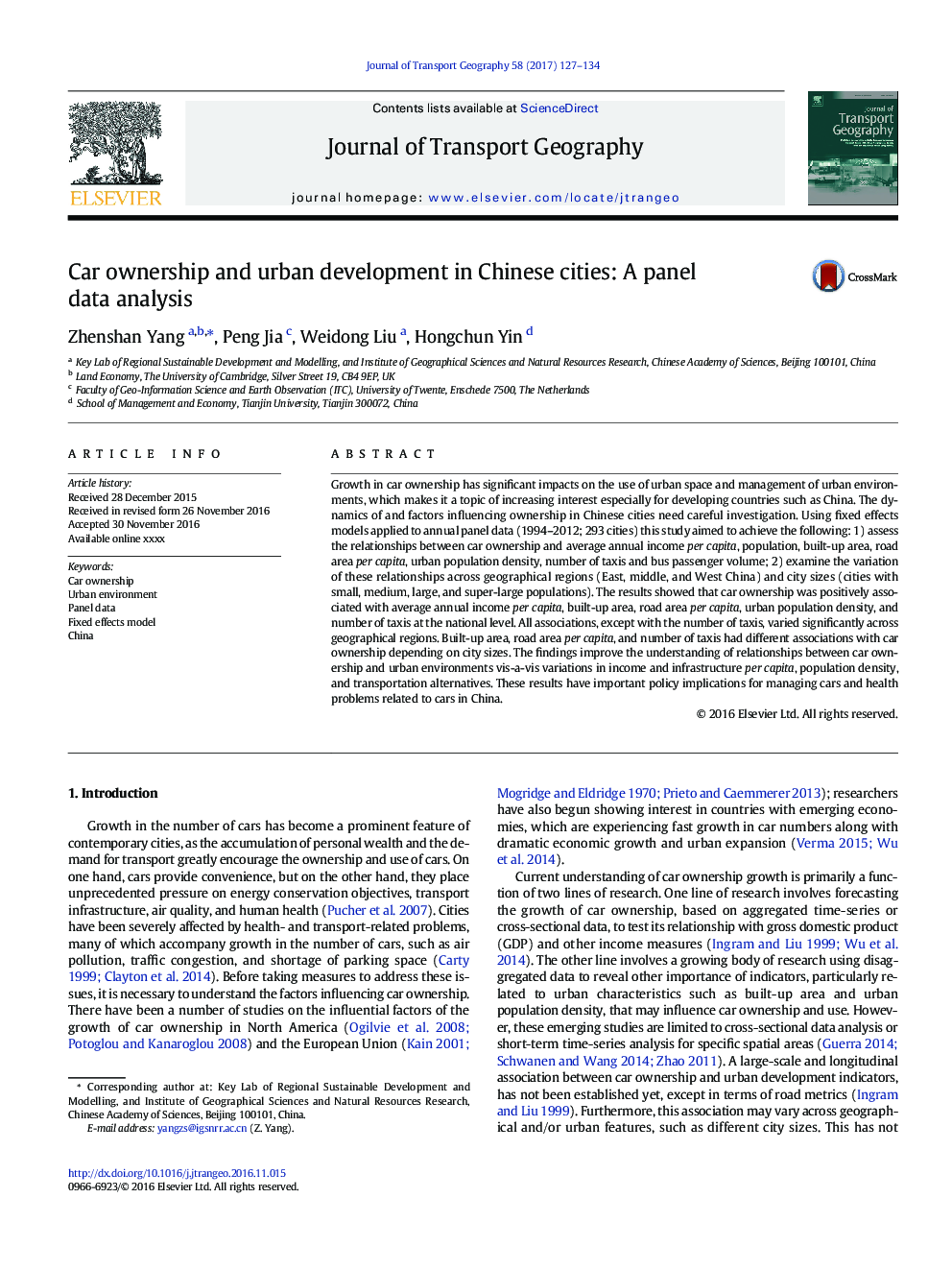| Article ID | Journal | Published Year | Pages | File Type |
|---|---|---|---|---|
| 5117611 | Journal of Transport Geography | 2017 | 8 Pages |
Abstract
Growth in car ownership has significant impacts on the use of urban space and management of urban environments, which makes it a topic of increasing interest especially for developing countries such as China. The dynamics of and factors influencing ownership in Chinese cities need careful investigation. Using fixed effects models applied to annual panel data (1994-2012; 293 cities) this study aimed to achieve the following: 1) assess the relationships between car ownership and average annual income per capita, population, built-up area, road area per capita, urban population density, number of taxis and bus passenger volume; 2) examine the variation of these relationships across geographical regions (East, middle, and West China) and city sizes (cities with small, medium, large, and super-large populations). The results showed that car ownership was positively associated with average annual income per capita, built-up area, road area per capita, urban population density, and number of taxis at the national level. All associations, except with the number of taxis, varied significantly across geographical regions. Built-up area, road area per capita, and number of taxis had different associations with car ownership depending on city sizes. The findings improve the understanding of relationships between car ownership and urban environments vis-a-vis variations in income and infrastructure per capita, population density, and transportation alternatives. These results have important policy implications for managing cars and health problems related to cars in China.
Related Topics
Life Sciences
Environmental Science
Environmental Science (General)
Authors
Zhenshan Yang, Peng Jia, Weidong Liu, Hongchun Yin,
